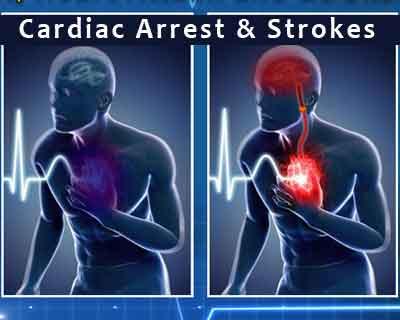- Home
- Editorial
- News
- Practice Guidelines
- Anesthesiology Guidelines
- Cancer Guidelines
- Cardiac Sciences Guidelines
- Critical Care Guidelines
- Dentistry Guidelines
- Dermatology Guidelines
- Diabetes and Endo Guidelines
- Diagnostics Guidelines
- ENT Guidelines
- Featured Practice Guidelines
- Gastroenterology Guidelines
- Geriatrics Guidelines
- Medicine Guidelines
- Nephrology Guidelines
- Neurosciences Guidelines
- Obs and Gynae Guidelines
- Ophthalmology Guidelines
- Orthopaedics Guidelines
- Paediatrics Guidelines
- Psychiatry Guidelines
- Pulmonology Guidelines
- Radiology Guidelines
- Surgery Guidelines
- Urology Guidelines
Deaths from cardiovascular disease rising even in rural India

Cardiovascular disease, comprising mostly ischaemic heart disease and stroke, is the leading cause of death globally and India is not far behind. India accounts for about a fifth of cardiovascular deaths globally, but nationally representative data on mortality trends are not yet available. According to a study published in The Lancet Global Health. Death due to cardiovascular disease is on the rise in India, causing more than one-quarter of all deaths in the country in 2015. Surprisingly it is affecting rural populations and young adults the most.
Led by Dr Prabhat Jha, director of the Centre for Global Health Research of St. Michael's Hospital in Toronto, Canada this is the first nationally representative study to measure cardiovascular mortality in India. The findings suggest that rates of dying from ischaemic heart disease has increased rapidly in rural areas of India in populations aged 30 to 69 and surpassed those in urban areas between the year 2000 and 2015.
The death rate due to cardiovascular diseases declined by a significant 41% in the US between 1990 and 2016 whereas in India though, it rose by around 34% from 115.7 to 209 deaths per one lakh population in the same period.
On the other hand, the probability of dying from stroke decreased overall but increased in India's northeastern states, where a third of premature stroke deaths occurred and only one-sixth of the population lives. In these states, deaths due to stroke were about three times higher than the national average.
"The finding that cardiac disease rose nationally in India and that stroke rose in some states was surprising," said Dr Jha, who is also a professor in the Dalla Lana School of Public Health at the University of Toronto. "This study also unearthed an important fact for prevention of death due to cardiovascular disease. Most deaths were among people with a previously known cardiac disease, and at least half were not taking any regular medications."
Dr. Jha and his team also showed that younger adults, especially those born after 1970, have the highest rate of death due to heart problems caused by narrowing of the heart's arteries."This work equips us with more detailed information that we couldn't have predicted based on earlier studies," said Dr. Jha.
This research is part of the Million Death Study, one of the largest studies of premature deaths in the world. In India, most deaths occur at home and without medical attention. Hundreds of specially trained census staff in India knocked on doors to interview household members about deaths. Two physicians independently examined these "verbal autopsies" to establish the most likely cause of death.
"Making progress in fighting the leading cause of death in India is necessary for making progress at the global level," Dr. Jha said. "We demonstrated the unexpected patterns of heart attack and stroke deaths. Both conditions need research and action if the world is going to achieve the United Nations Sustainable Development Goal of reducing cardiovascular mortality by 2030."
Focusing on the need for preventive measures like maintaining a healthy lifestyle and increasing level of awareness of the same especially in the youth of the country is the need of the hour considering the present trends. Secondary prevention with effective and inexpensive long-term treatment and adult smoking cessation could prevent substantial numbers of premature deaths.
For more details click on the link: DOI: https://doi.org/10.1016/S2214-109X(18)30242-0

Disclaimer: This site is primarily intended for healthcare professionals. Any content/information on this website does not replace the advice of medical and/or health professionals and should not be construed as medical/diagnostic advice/endorsement or prescription. Use of this site is subject to our terms of use, privacy policy, advertisement policy. © 2020 Minerva Medical Treatment Pvt Ltd